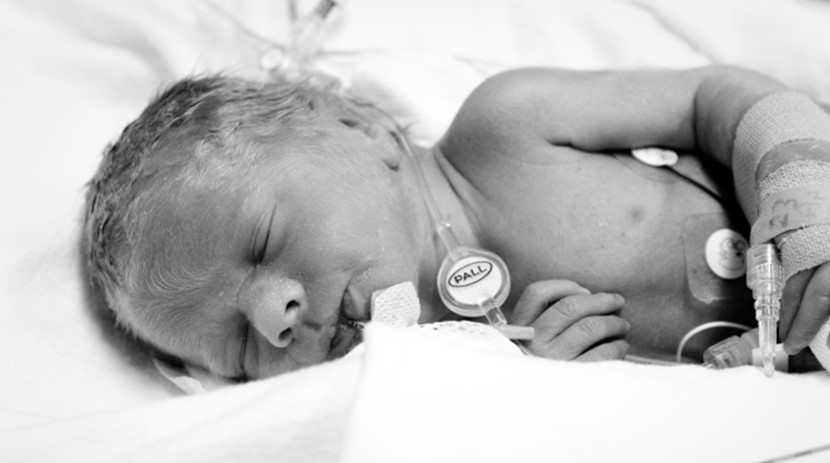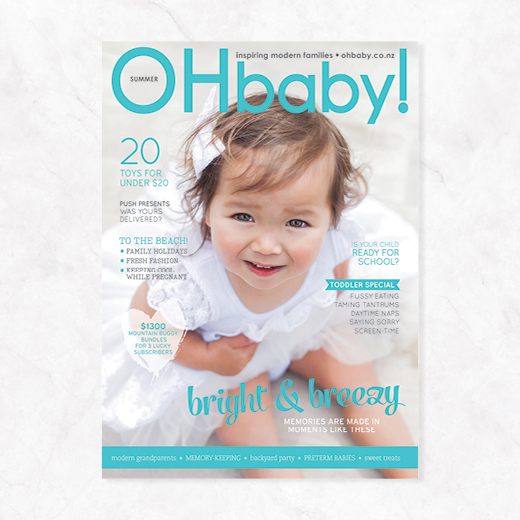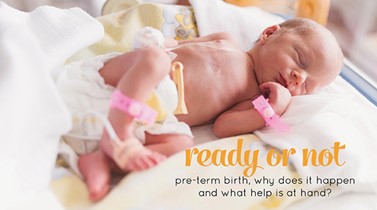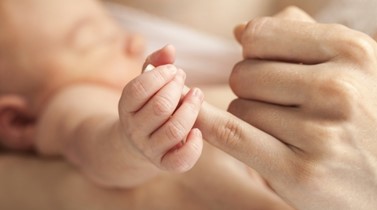10 weeks ahead of schedule: one mother's story of preterm delivery

Melanie Doubleday planned to spend one more term teaching her year one class before taking maternity leave. Even teachers can’t organise some things though, and Mel barely made it through the first day of term before heading to hospital in very early labour.
Early in my pregnancy, I’d joked that I wasn’t even going to think about labour until I was 30 weeks along. Little did I know that not long after 30 weeks I’d be holding my little boy in my arms, beginning the journey of getting him home.
But this wasn’t the plan!
I had a great seven months of pregnancy – nothing to indicate I would have a preterm baby. But on my first day back at work after the holidays, at 5pm when I was in my classroom getting organised for the next day, my waters broke. I rushed to hospital, scared but hopeful that they were just going to make the waters stop flowing and I’d be able to get back to being pregnant, finish work and have this baby at the normal time – as planned.
Waiting, without knowing, was the hardest part. I spent two days in hospital just waiting. There were lots of tears and lots of questions. I was given steroids and drugs to prevent contractions from starting, but my heart reacted to the latter medication and I ended up in the cardiac care unit – the only pregnant patient in there! The medical team decided to go ahead with the steroids but stop the contraction-preventing drugs, and if this baby wanted to come then so be it. Our baby was monitored and he gave us no need for concern through the whole process – quite oblivious to the commotion that was happening on the outside.
Early arrival
Three days after my waters broke, Theo was born at 30 weeks and five days. He was born naturally – all 1.77 kilograms of him. I got to hold him for four minutes while the doctors and nurses checked him out. It was a precious time – it felt like what a ‘normal’ mum would have got to experience after giving birth. He was then put on a special machine, called a giraffe, and hooked up to be monitored and given a little oxygen.
Theo spent five days in the NICU. He was attached to heart and oxygen saturation monitors and had a feeding tube in his mouth. Fortunately, he was breathing all by himself and didn’t need breathing tubes. The staff in the NICU were amazing. They talked us through each machine and every process and answered our many questions. In NICU, cuddles are a priority. Cuddling with wires and tubes attached was tricky, but the best feeling in the world!
Two days after Theo was born, I was discharged from hospital. It was so weird leaving the hospital without our baby. I’d had him with me in bump form for seven months. My husband, Luke, and I had been talking to him. Now he was born but he wasn’t with us and it was hard. Life was normal, but it wasn’t normal.
Part-time parenting
I was at the hospital every day, from 10am till 7pm. I felt guilty as soon as I got in the car to go home each night. It was strange leaving other people to look after your child. I wanted to give the nurses instructions – but I just had to thank them for being there when I couldn’t. It was quite exhausting but part-time parenting was our new normal.
Sometimes I worried that I wouldn’t be able to attach to Theo. That he wouldn’t know that I was his mum because I wasn’t there all the time. Luke and I made it a priority to be 100 percent hands-on when we were at the hospital. The nurses showed us how to care for our tiny boy. Before long we were preparing his milk and feeding him through his feeding tube, changing, bathing and cuddling him like pros.
Meeting milestones
We were told early on that Theo would not be going home until he was at least 35 weeks (gestation). There were lots of little targets that he had to meet before that point. We celebrated each milestone: moving from the NICU to an incubator in the Special Care Unit, hitting the two kilogram mark and moving into a cot (like a real baby), and getting to wear clothes for the first time. At 33 weeks, Theo was interested in sucking so I started breastfeeding once a day and topped him up with expressed milk through his feeding tube the rest of the time.
Family and friends helped us through. Their visits to the hospital were something to look forward to, making the days less lonely. I can’t speak highly enough of the staff at Middlemore NICU and SCU. We had to trust them every day to look after our boy when we couldn’t be there, and they were the best!
Hometime
When Theo reached 35 weeks, I went back to hospital to ‘room in’ with him. We had to show that Theo could feed and grow without the feeding tube. Three days later, the day we had been waiting for finally arrived. After five weeks in hospital it was time to take our baby home.
The ongoing support from the hospital was fantastic. Nurses and our midwife visited us at home every second day, making the transition from hospital to home as smooth as possible. It was comforting to know that help and support were so easily available and accessible.
Everyone’s story is different
Everyone’s pregnancy and birth stories are different. My preconceived ideas about what a preterm birth would be like were blown out of the water. It was hard, but not horrific. We feel blessed that Theo has not had the health complications sometimes associated with being born preterm. The reason for our preterm birth has not been explained and we will just need to be a little more closely monitored next time round.
Every day I am grateful that we have a hospital system that cares for tiny babies and their parents.
Six months down the track, Theo is a happy and healthy little boy. He is making great progress.

PHOTOGRAPHY: CATHERINE MAY, CATHERINEMAYPHOTOGRAPHY.CO.NZ

AS FEATURED IN ISSUE 32 OF OHbaby! MAGAZINE. CHECK OUT OTHER ARTICLES IN THIS ISSUE BELOW

















